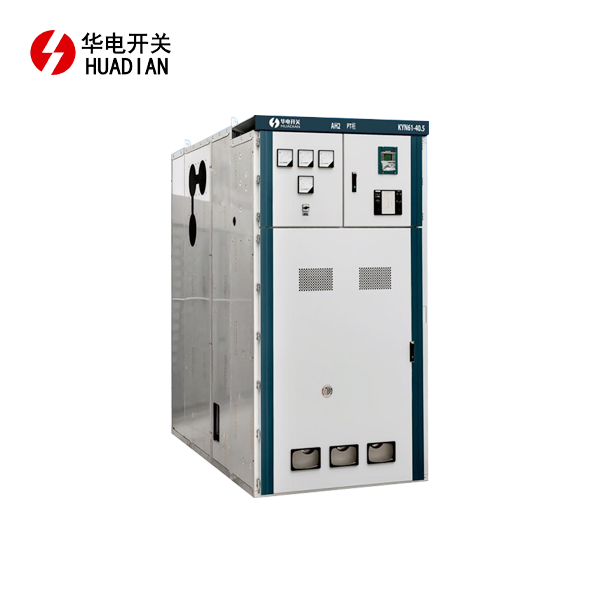Air-Insulated Switchgear (AIS)
Principles of Operation
Air-insulated switchgear (AIS), a common type of high voltage switchgear, utilizes atmospheric air as the main insulating medium to separate and protect energized components. It depends on maintaining adequate air gaps between conductive parts to prevent electrical arcing and breakdown. The design ensures that circuit breakers, disconnectors, earthing switches, and instrument transformers work together within this open-air environment. By leveraging air’s natural dielectric properties, AIS safely interrupts and controls high voltage currents while providing reliable electrical isolation in power systems.
Advantages and Applications
AIS offers a range of advantages such as lower upfront costs, straightforward maintenance procedures, and easy visual inspections due to its open design. It is ideal for outdoor installations where space is ample, as the natural cooling provided by open air reduces the need for additional cooling equipment. This makes AIS particularly suitable for use in transmission substations, power generation facilities, and various industrial plants requiring dependable high voltage switchgear for reliable switching and protection solutions.
Maintenance Considerations
Although air-insulated switchgear is generally durable, it requires regular upkeep to maintain reliable operation. Routine maintenance involves cleaning surfaces to remove dust, pollutants, and other contaminants that may degrade insulation. It also includes thorough inspections of insulators for cracks or deterioration, and checks for corrosion or wear on conductive parts. Environmental conditions like humidity, pollution levels, and temperature extremes can accelerate wear, making frequent maintenance essential to prolong the lifespan and ensure the consistent performance of high voltage switchgear based on AIS technology.
Gas-Insulated Switchgear (GIS)
Sulfur Hexafluoride Technology
Gas-insulated switchgear (GIS) relies on sulfur hexafluoride (SF6) gas as its primary insulating medium due to its excellent dielectric strength and arc-quenching properties. SF6 is chemically stable, non-flammable, and inert, making it ideal for high voltage electrical equipment. In GIS, all energized components are sealed inside grounded metal enclosures filled with pressurized SF6 gas. This sealed environment provides reliable insulation and rapid arc interruption, enabling GIS to operate safely and efficiently as high voltage switchgear in demanding electrical networks, even under extreme conditions.
Compact Design and Space Efficiency
GIS is renowned for its remarkably compact design, which significantly reduces the physical space needed compared to air-insulated switchgear (AIS). This reduction in footprint can be as much as 90%, allowing installations in locations with limited space such as urban substations, underground facilities, and offshore platforms. The sealed metal enclosures protect sensitive components from dust, moisture, and other environmental contaminants, enhancing system reliability while also decreasing the frequency and complexity of maintenance activities required over the lifespan of high voltage switchgear equipment.
Environmental Considerations
Despite its technical advantages, SF6 is a potent greenhouse gas with a global warming potential thousands of times greater than CO2. Consequently, the electrical industry is focused on minimizing SF6 emissions through improved handling, recycling, and leak detection methods. Research into alternative insulating gases and vacuum technologies is ongoing to find more environmentally friendly solutions. Operators of SF6 gas-insulated switchgear (GIS) must follow strict protocols for gas handling and personnel training to ensure the safe use of SF6, reduce leaks, and mitigate environmental impact throughout the equipment’s lifecycle.
Hybrid Switchgear
Combining AIS and GIS Technologies
Hybrid switchgear effectively merges the advantages of air-insulated switchgear (AIS) and gas-insulated switchgear (GIS) by incorporating key components from both technologies. Critical elements such as circuit breakers and disconnectors are housed within compact GIS enclosures filled with insulating gas, while other parts utilize traditional air insulation. This combination enables a high voltage switchgear system that maintains superior performance and reliability while addressing space limitations and environmental concerns. By integrating these technologies, hybrid switchgear offers a versatile solution adaptable to diverse electrical network demands.
Flexibility in Design and Installation
The hybrid switchgear design provides remarkable flexibility, allowing engineers to tailor the high voltage switchgear system to the unique requirements of each project. This adaptability is especially valuable in retrofit or upgrade projects where replacing existing AIS with full GIS is impractical or too costly. Hybrid solutions can be configured for both indoor and outdoor installations, depending on site constraints and environmental factors. This design versatility facilitates easier integration into existing substations and allows for phased upgrades, minimizing downtime and disruption during installation.
Cost-Benefit Analysis
Evaluating hybrid switchgear requires a detailed cost-benefit analysis that weighs initial expenses against long-term advantages. While the upfront cost may be higher than conventional air-insulated switchgear (AIS), hybrid switchgear often delivers savings through reduced maintenance, lower space requirements, and enhanced system reliability. Considerations such as lifecycle costs, ease of future expansion, and operational efficiency play a critical role in decision-making. For many applications facing space limitations but not requiring full gas-insulated switchgear (GIS) conversion, hybrid switchgear presents an economically and technically balanced choice.
Conclusion
The diverse landscape of high voltage switchgear offers solutions for a wide range of power system requirements. Air-insulated switchgear provides a cost-effective option for outdoor installations, while gas-insulated switchgear excels in compact, indoor environments. Hybrid switchgear bridges the gap, offering flexibility and balanced performance. As power systems continue to evolve, understanding these different types of switchgear is crucial for engineers, planners, and decision-makers in the electrical industry. The choice between AIS, GIS, and hybrid solutions depends on various factors, including space constraints, environmental conditions, maintenance capabilities, and long-term operational costs.
Contact Us
For more information about high voltage switchgear options and to explore solutions tailored to your specific needs, please contact us at austinyang@hdswitchgear.com/rexwang@hdswitchgear.com/pannie@hdswitchgear.com. Our team of experts is ready to assist you in selecting the most appropriate switchgear for your power system requirements.





